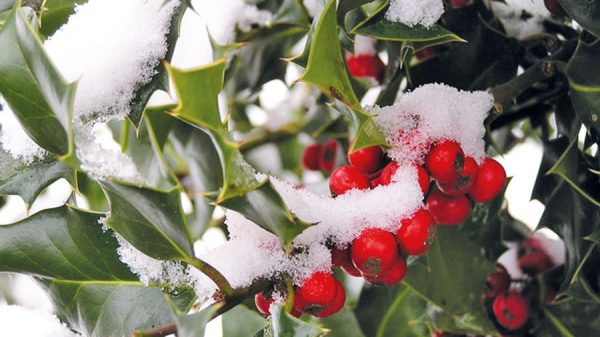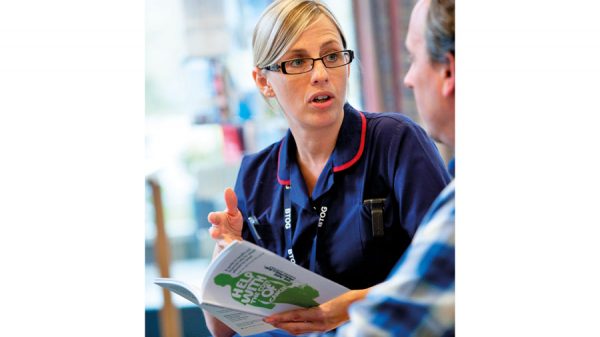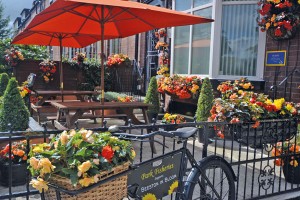What do a Bottle-Brush and an apple have in common? Well they are both plants that are thriving in our Editor’s garden. So what is so interesting about these, well they both originate from places far from our shores. Like many of our garden plants these two subjects thrive in our climate because we are an island and benefit from a varied climate and weather pattern (isn’t that true’).
Bottle Brush, or Callistemon to give it its botanical name is native to Australia, and the origins of our humble apple is actually Central Asia. It never ceases to amaze me that through the work of our intrepid plant collectors and the genius of our nurseries and breeders we have a wealth of charming and practical plants. It’s hard to think of life without apple pie and custard (or cream); life in Yorkshire just wouldn’t be the same.
Whilst these two subjects are only examples of the thousands of plants and food crops at our disposal they can be a challenge at times, whether it is our sometimes uncomfortable climate or an attack from pests or diseases. Have I told you my other passion is books, I have a huge collection covering many elements of gardening, and I scan them regularly and like nothing better than searching out information on a plant or aspect of gardening? No surprise then that faced with these two subjects I was compelled to delve into my volumes. So what about Callistemon, well originating from Australia doesn’t mean that it is able to withstand our winters and indeed I have seen these plants perish in an open exposed garden. They are evergreen which puts them at a slight disadvantage in that their leaves can be damaged by cold winds and severe frosts. The trick is to find a spot in the garden that provides a little protection, for example a south facing wall close to the house, if the weather turns particularly cold wrap it with garden fleece or grow it in a container and bring it into the conservatory over winter. I treat most of my garden plants in the same manner, water when dry and feed through the growing season with an organic pellet fertiliser. In a severe winter these shrubby plants from the southern hemisphere can be damaged but don’t be too hasty to dig them out. Wait and through the spring and summer months you may see small green shoots appearing from the lower branches, give it a feed and water and wait until there are several strong shoots before cutting out all the dead branches.
So what about our apple tree, well it’s an important time for fruit trees in general, especially in dry summers. Just like any plant they need water and food to swell the fruit, it is good practice to keep an area two feet (60cm) from the trunk clear of weeds which can compete with the tree and stop water reaching the roots. I mulch with a good garden compost or manure annually in spring and, yes you’ve guessed it a sprinkling of organic pellet fertiliser. If you haven’t thinned your apple crop it’s a good time to do this as branches laden with heavy crops can break and damage the tree, also with large number of fruit on the tree they will not develop to their full potential giving lots of smaller fruits.
But there is another problem with our Editors tree, if you look closely at the knobbly bit in the middle there are some grey woolly deposits, this is Woolly Aphid, a relative of the greenfly which secrets a white waxy substance as a protective cover whilst they feed on the sap. They are often found on old pruning curs and in later on young shoots. They can cause the bark to crack and become infected with apple canker which will eventually overcome the tree. Control can be quite difficult and spraying with a chemical in spring at the first sign is the recommended treatment, using a product which contains thiacloprid or acetamiprid. Ask at your local garden centre or nursery for advice on the appropriate product. If like me you do not like using too many chemicals in your garden then some limited control can be achieved by spraying with horticultural liquid soap. This may be available from your local garden centre or online.
Jobs to do this month include, trimming hedges, but don’t forget they need food and water just like any other garden plant. Summer pruning of fruit encourages the formation of fruiting spurs which are essential to ensure good crops in future years. Keep an eye on your flowering annuals, allow a couple of flowers on each plant to develop seed, allow it to ripen on the plant and as soon as it starts to dry, pop it in an open paper bag for few weeks to dry and eject the seed. I store mine in small brown envelopes in the fridge until the following spring.
Next month, Lawn repairs, planting spring bulbs and preparing the garden for autumn and winter.
Happy gardening,
Martin







